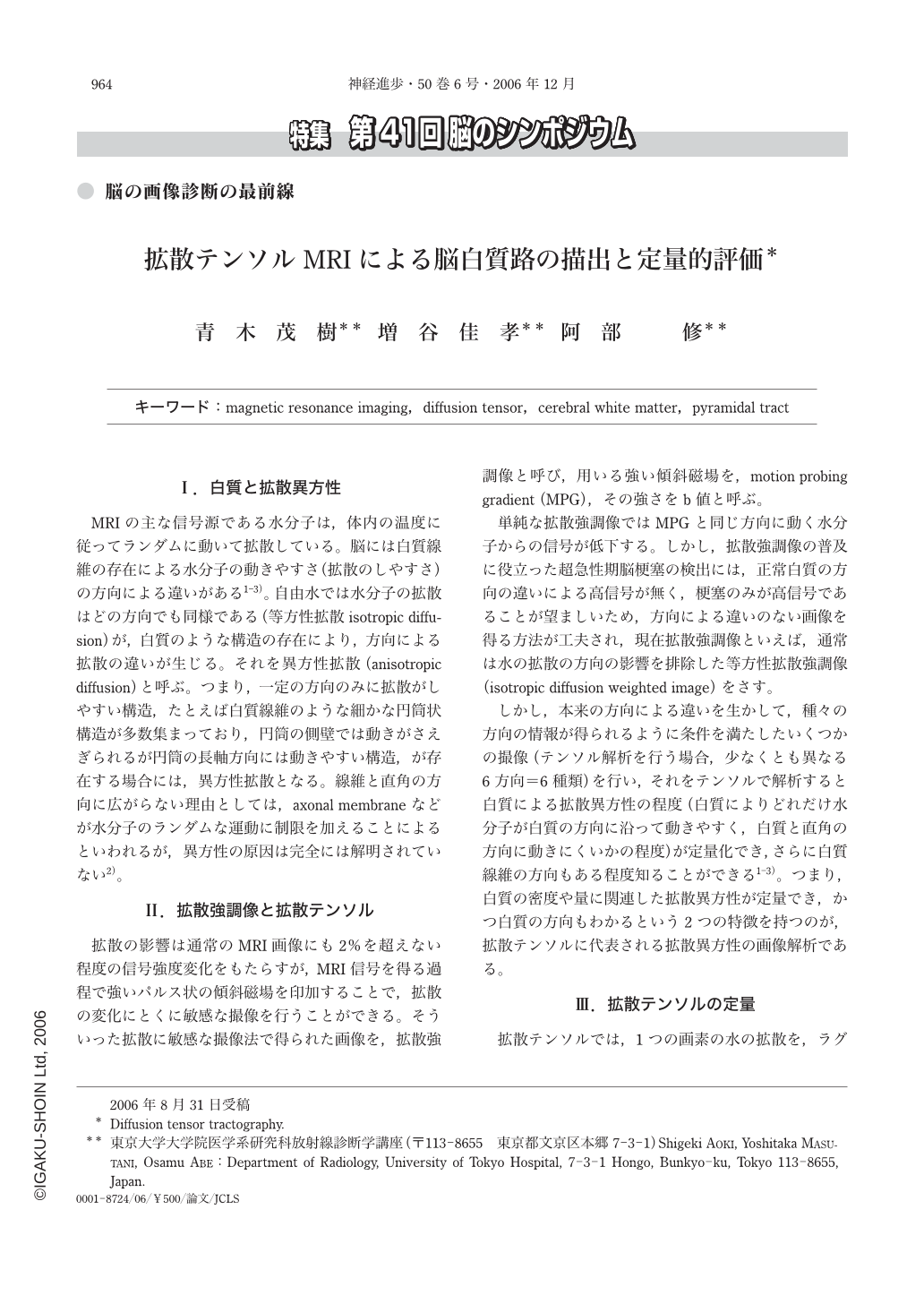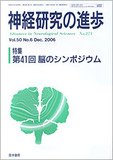Japanese
English
- 有料閲覧
- Abstract 文献概要
- 1ページ目 Look Inside
- 参考文献 Reference
Ⅰ.白質と拡散異方性
MRIの主な信号源である水分子は,体内の温度に従ってランダムに動いて拡散している。脳には白質線維の存在による水分子の動きやすさ(拡散のしやすさ)の方向による違いがある1-3)。自由水では水分子の拡散はどの方向でも同様である(等方性拡散isotropic diffusion)が,白質のような構造の存在により,方向による拡散の違いが生じる。それを異方性拡散(anisotropic diffusion)と呼ぶ。つまり,一定の方向のみに拡散がしやすい構造,たとえば白質線維のような細かな円筒状構造が多数集まっており,円筒の側壁では動きがさえぎられるが円筒の長軸方向には動きやすい構造,が存在する場合には,異方性拡散となる。線維と直角の方向に広がらない理由としては,axonal membraneなどが水分子のランダムな運動に制限を加えることによるといわれるが,異方性の原因は完全には解明されていない2)。
Diffusion tensor imaging is a technique to visualize cerebral white matter tracts and also to evaluate them quantitatively using diffusion indices such as fractional anisotropy(FA). The orientation of white matter tracts can be analyzed and tracked by the methods named as diffusion tensor tractography(DTT)or fiber tracking. Three dimensional relationship between the major white matter tracts(such as corticospinal tract, corticobulbar tract, optic radiation)and the lesions(such as infarcts, tumors, AVMs)was clearly visualized(by a freeware:dTV and VOLUME-ONE made by one of us). This information was helpful to know the prognosis of infarction in the early stage, and was useful in preoperative evaluation and planning of tumors and AVMs. Segmentation of the white matter using DTT and its quantitative analysis by FA and other diffusion indices〔so called tract specific analysis or Tract-of-Interest(TOI)analysis〕were useful to evaluate the degree of the white matter changes in degenerative changes such as Wallerian degeneration, ALS, schizophrenia, Alzheimer disease and etc. We found significant differences of FA between ALS and control group in the segmented corticospinal tract and corticobulbar tracts. We also found significant differences of FA between schizophrenia patients and controls in the anterior cingulum, fornix and uncinate fasciculus. Further technical development can be expected in both imaging acquisition and diffusion data analysis. With acquisition techniques such as parallel imaging or PROPELLER techniques on 3T MR imagers, we can now track cranial nerves from the brain stem to the orbit and internal auditory canal. With imaging analysis techniques such as RBF, we separately tracked components of the pyramidal tract and also made probability map using normalization technique.

Copyright © 2006, Igaku-Shoin Ltd. All rights reserved.


